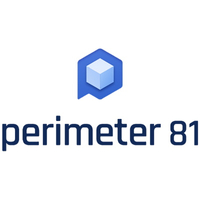Five common myths and surprising truths about SASE
The time of SASE is clearly ahead of us

Secure Access Service Edge (SASE) is winning over users across the globe as the next big thing in the world of cybersecurity and digital transformation. With the expansion of the trend, there inevitably emerged many half-truths and misconceptions regarding what this technology can or cannot do.
This hurts the adoption and perception of SASE as the users are both overestimating or underestimating it, necessitating the dispelling of the most widespread myths about its functionality. Read on to learn more about the five most common myths and surprising truths about this important technology.
Perimeter 81 is Techradar's best business VPN
Save 250+ yearly hours on manual configuration. Deploy your entire organization within a single day. Learn why Perimeter 81 is TechRadar's choice for the best Business VPN. Ditch legacy hardware and make the move to the cloud. See how simple it is for yourself.
SASE for Superheroes eBook: How SASE Is Transforming Network Security
Get our SASE for Superheroes eBook and discover how to combat tool sprawl and secure your remote workforce from outside threats post-pandemic. Radically simple cybersecurity. Learn why organizations are rapidly embracing SASE as part of their long-term security strategy plan.
1) Is SASE really a cure-all for all security woes?
SASE is a powerful technology, but it is not a cybersecurity equivalent of the Second Coming. That is a key thing to remember to be able to set your expectations right once you overcome the initial discomfort associated with its deployment.
First of all, by its very design, SASE is intended to be used as part of a broader organization-wide security strategy. It does not remove the need for having expert personnel on hand if you are to tackle all accidents in an around-the-clock and most efficient manner. Security professionals are still a must if you are to detect risks in time and prevent a major network security breach.
Also, SASE is not a panacea for securing remote operations either. It does not feature endpoint detection and response or cloud workload protection as part of the package, even though endpoint detection plays a key role in combating ransomware, for example.
Yet, down the line, SASE will profit from the broader availability of the infrastructure to support it. In assessing your need for its deployment, you have to consider this on an equal level as a financial aspect of such a strategic migration.
2) SASE is intended only for large enterprises
SASE works best for corporations because of the distributed nature of assets they need to protect, it is claimed as part of this myth. This is true, but this is only an ideal use case, which means that SASE will serve small and medium enterprises just as well, as long as they understand that the protection of key assets goes beyond the confines of their offices.
Are you a pro? Subscribe to our newsletter
Sign up to the TechRadar Pro newsletter to get all the top news, opinion, features and guidance your business needs to succeed!
In other words, even smaller organizations stand to benefit from SASE’s flexibility and simplicity. Take, for example, the need to provide efficient data access control all the way down to the most granular level. Even with only a handful of devices involved, coming up and enforcing an efficient security policy can become a burden that SASE can easily take off your shoulders. Yes, this will work the same, no matter if you are managing a small enterprise or a corporation.
Finally, with the commodification of SASE solutions and the decreasing prices, this obsolete way of imagining the intended use of SASE is surely on its way out.
3) SASE cannot be deployed gradually
This is yet another common myth that stems from the lack of interest in keeping an eye on the evolution of this technology. Actually, the private cloud model for SASE is most often offered to SMBs as a cost-effective and flexible upgrade option for the existing software solutions.
Zero Trust services offered under SASE involve the full control of content prior to authorizing access and do away with the trust-based concepts. The users can easily introduce these services as a stepping stone for acquiring a full-blown SASE solution, with an option to fine-tune their deployment in line with their specific needs at the moment. In addition, subscription models for SASE are also easily available in various formats.
Migrating to the cloud as part of the SASE implementation is a slightly scary proposition for those who have grown used to their firewalls and overpaid hardware. Instead, SASE should be seen as an easily and incrementally applicable solution for migrating from on-premise systems to the cloud and integrating it with the existing assets.
4) SASE is too complex for fast adoption
The truth is actually quite the opposite, but this attitude mostly has to do with the lack of knowledge of SASE and its benefits. In reality, SASE simplifies the security operations on the account of its centralized structure and software-based mode of operation. As such, it relieves the user of the burden of having to learn everything about every piece of hardware they employ for security.
The same can be said of perceived complexity associated with the SASE solution deployment – it is actually a more streamlined and simpler procedure compared to implementing traditional network security systems. By integrating network and security services, SASE will ultimately reduce the complexity of managing these for both security and IT departments.
So, in the majority of cases, writing off SASE as a “complex” alternative to hardware-based cyber security simply boils down to the lack of readiness to scratch beneath its surface.
5) SASE is too expensive
While the migration to SASE is a strategic investment that should not be taken lightly, the benefits this move offers can easily recoup initial costs.
For starters, SASE will drive down both licensing and operational expenses for any business by minimizing the need to upgrade proxies all the time. Also, businesses will welcome the opportunity to stop hoarding soon-to-be obsolete security and networking systems. In addition to hardware, solutions such as firewalls are often provided by different vendors, forcing the employees to re-learn its features each time an installation is introduced or upgraded.
In addition, by cutting down on the time needed for these operations, businesses can become more productive and resilient and scale their operations more easily.
Conclusion
The time of SASE is clearly ahead of us, but separating the hype from the real deal is still a prerequisite for jumping on this bandwagon. Many organizations are demonstrating a lack of understanding of the basic technical underpinnings of SASE, leading to its overestimation or underestimation, both equally harmful.
This is why it is necessary to dispel at least some of the most egregious myths if one is to avail oneself of the benefits of SASE. This includes the misconceptions about its price, complexity, deployment, and potential. Those who get around these will be readier to tap into the undeniable power of SASE as a game-changing technology.
- Check out our best business VPN
Sead is a seasoned freelance journalist based in Sarajevo, Bosnia and Herzegovina. He writes about IT (cloud, IoT, 5G, VPN) and cybersecurity (ransomware, data breaches, laws and regulations). In his career, spanning more than a decade, he’s written for numerous media outlets, including Al Jazeera Balkans. He’s also held several modules on content writing for Represent Communications.

